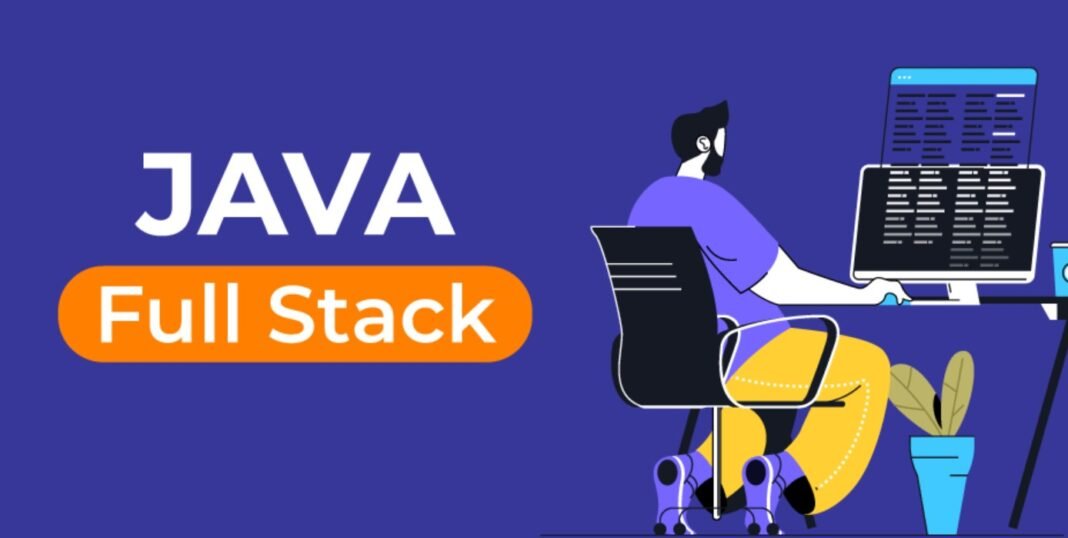Performance optimization is an essential part of modern web development. As applications grow in complexity, they often include large amounts of unused JavaScript code, which can slow down page load times and increase bandwidth usage. One of the most effective techniques for eliminating unnecessary code is tree shaking, a process that removes unused JavaScript functions and modules during the build process.
For developers undergoing full stack Java developer training, mastering tree shaking is crucial for building efficient and lightweight applications. This technique ensures that only essential code is included in the final bundle, leading to faster load times and improved user experience. In this guide, we will explore what tree shaking is, how it works, and how full-stack developers can leverage it in modern frameworks to optimize performance.
What is Tree Shaking?
Tree shaking is a dead code elimination technique that removes unused JavaScript during the build process. It is primarily used in JavaScript bundlers like Webpack, Rollup, and ESBuild, which analyze code dependencies and exclude functions, variables, or modules that are never used in the final application.
The term “tree shaking” comes from the idea of shaking a tree to remove dead leaves, meaning that only the necessary code remains while the rest is discarded. This results in smaller JavaScript bundles, reducing the time needed to download and execute scripts.
Why Tree Shaking is Important for Full Stack Developers
Full-stack developers often work with large codebases, including frontend frameworks like React, Angular, Vue, and backend frameworks such as Node.js and Express. These frameworks come with numerous modules and dependencies, many of which may not be required for every project.
For students enrolled in a full stack developer course in Bangalore, understanding tree shaking helps them learn how to optimize applications efficiently. By reducing the size of JavaScript bundles, developers can improve performance, decrease server load, and enhance scalability.
How Tree Shaking Works
Tree shaking relies on static analysis to determine which parts of the code are actually used. It primarily works with ES6 module syntax (import/export) because ES6 modules allow for static analysis at build time, unlike CommonJS modules, which use dynamic require() statements.
Steps Involved in Tree Shaking
- Identify Unused Code: The bundler scans the application to find functions, imports, or modules that are never used.
- Mark Code for Removal: The unused code is flagged as “dead code” during the build process.
- Optimize and Remove Dead Code: The final build excludes unused functions and variables, reducing the overall bundle size.
Benefits of Tree Shaking
1. Smaller JavaScript Bundles
Removing unused code significantly reduces the size of JavaScript files, leading to faster page loads and lower bandwidth usage.
2. Improved Application Performance
A smaller bundle means less JavaScript to parse and execute, resulting in improved runtime performance and smoother user experiences.
3. Faster Build Times
Optimized bundles reduce build time in CI/CD pipelines, improving deployment efficiency.
4. Lower Server Load
Since optimized bundles consume less bandwidth, tree shaking helps reduce server load, making applications more scalable.
5. Better Maintainability
By eliminating unnecessary dependencies, tree shaking makes the codebase cleaner and easier to manage.
Implementing Tree Shaking in Modern Full Stack Frameworks
1. Using Webpack for Tree Shaking
Webpack is one of the most popular bundlers used in modern full-stack development. It supports tree shaking by default when configured correctly. Developers can ensure effective tree shaking by:
- Using ES6 module imports instead of CommonJS require() statements.
- Enabling the mode: “production” setting in Webpack, which triggers tree shaking.
2. Optimizing Tree Shaking in React and Angular
React
In React applications, tree shaking can be enhanced by:
- Using named imports instead of importing entire libraries (e.g., import { useState } from ‘react’ instead of import React from ‘react’).
- Avoiding unnecessary imports from large utility libraries like Lodash.
Angular
Angular’s built-in Ahead-of-Time (AOT) compilation and Webpack integration help optimize tree shaking. Developers should:
- Enable production mode to ensure unused components and services are removed.
- Use lazy loading to reduce initial bundle sizes.
3. Tree Shaking in Backend Development
While tree shaking is primarily used in frontend frameworks, backend applications in Node.js can also benefit. Using tools like ESBuild or Rollup, developers can remove unused server-side code and optimize API responses.
For those enrolled in a full stack Java developer training program, learning tree shaking techniques across frontend and backend frameworks helps improve application efficiency.
Best Practices for Effective Tree Shaking
1. Use ES6 Modules
Tree shaking works best with ES6 imports/exports, so developers should avoid CommonJS (require() statements).
2. Minimize External Dependencies
Many third-party libraries contain unused functions. Developers should only import the necessary parts of a library rather than the entire module.
3. Enable Production Mode in Bundlers
Setting mode: “production” in Webpack and similar tools ensures that tree shaking is applied during builds.
4. Use Code Splitting Alongside Tree Shaking
Code splitting allows developers to break large JavaScript files into smaller chunks, loading only what is needed when required. Combining tree shaking with lazy loading further enhances performance.
5. Analyze Bundles Regularly
Using tools like Webpack Bundle Analyzer helps developers visualize what is included in their JavaScript bundles and identify unnecessary dependencies.
Real-World Use Cases of Tree Shaking
1. E-Commerce Platforms
Online stores often rely on large JavaScript libraries for UI components and payment gateways. Tree shaking helps remove unused code, improving page speed and conversion rates.
2. Enterprise Web Applications
Business applications with large dashboards and complex data visualizations can benefit from tree shaking by eliminating unused functions and reducing load times.
3. Mobile-Friendly Web Apps
For mobile users, fast loading times are crucial. Tree shaking optimizes JavaScript bundles, ensuring smooth performance on slower networks.
For students enrolled in a full stack developer course in Bangalore, studying real-world applications of tree shaking provides practical insights into performance optimization.
Challenges of Tree Shaking
1. Dynamic Imports May Prevent Optimization
Tree shaking works best with static imports. If modules are dynamically imported, some dead code may remain in the bundle.
2. Some Libraries Are Not Tree-Shakeable
Older JavaScript libraries that do not use ES6 modules may not be optimized by tree shaking. Developers should check library documentation to ensure compatibility.
3. Requires Careful Dependency Management
Removing too many dependencies can sometimes break application functionality. Developers should test thoroughly before deploying optimized builds.
Conclusion
Tree shaking is an essential optimisation technique for modern full-stack applications. By eliminating unused JavaScript code, it improves performance, reduces bundle sizes, and enhances user experience.
For developers undergoing full stack Java developer training, mastering tree shaking ensures they can build lightweight and efficient applications. By following best practices and leveraging modern bundlers like Webpack and Rollup, full-stack developers can ensure their applications remain fast, scalable, and optimized for performance.
Business Name: ExcelR – Full Stack Developer And Business Analyst Course in Bangalore
Address: 10, 3rd floor, Safeway Plaza, 27th Main Rd, Old Madiwala, Jay Bheema Nagar, 1st Stage, BTM 1st Stage, Bengaluru, Karnataka 560068
Phone: 7353006061
Business Email: enquiry@excelr.com







